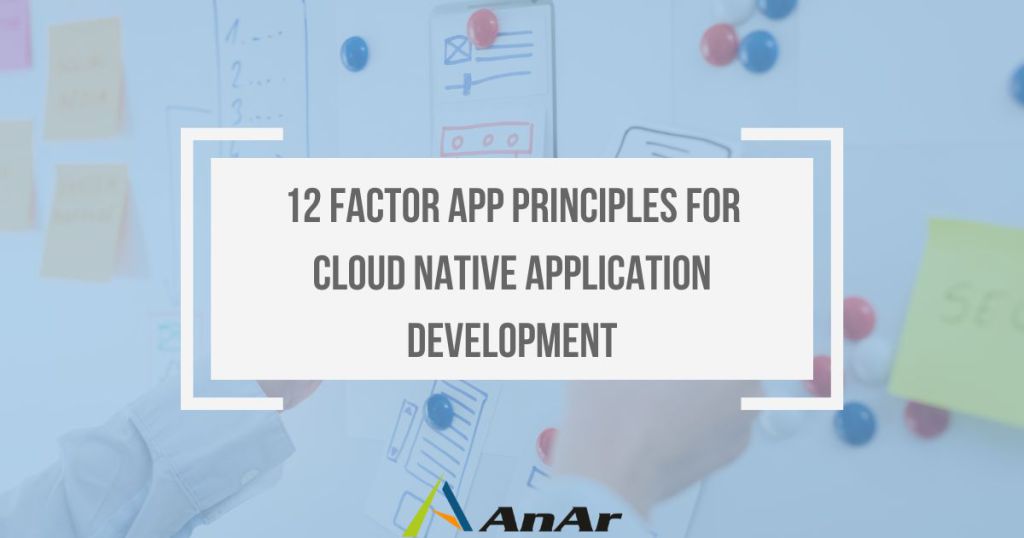Engineers keep reinventing the wheel to avoid unforeseen bumps in the road of Cloud native Software Development. For developing a high-performing, bug-free, and enterprise-scale application, we need inventions and a few well-developed structures to support the sustainability of those inventions. One among those structures is a tried and tested outline called 12 Factor app development.
Before we discuss the 12 Factor App Development principles, we need to briefly understand the history behind them because I find that understanding the history behind things helps us understand those decisions a lot better.
History of 12 Factor App Principles
Heroku developers created the Twelve-Factor Methodology in 2012 to aid in the development of scalable SaaS apps. These were created by programmers who also wrote and distributed thousands of other programs. They created this rule book for the following reasons.
- To avoid the expense of software depreciation.
- To help to bridge the gap among developers working on the same application’s codebase.
- To control the characteristics of an app’s organic growth over time.
- To increase awareness of the structural issues that arise in contemporary app development.
Today, any organization building applications as a product or service can use these principles to enhance workflows and processes.
12 Factor App Principles and Microservices Perspectives
It’s hard to create web-based applications. Risks abound, ranging from an application freezing due to network overload to competitors stealing your customer base because they can deliver rich software to demanding users quicker than you can. Any edge you can gain in creating workable code for lighter and faster applications is advantageous to you.
Let’s look at how you can apply these 12 principles to write code that can be released consistently, scaled quickly, and maintained predictably and consistently.

1. Codebase
The first Twelve-Factor Apps principle is that each application should have a single codebase. Multiple codebases for different versions should be prohibited. Please keep in mind that having branches is acceptable. For example, there should be only one repository for all deployment environments, not many. Multiple deployments are, nevertheless, feasible.
Deployment in the 12 Factor is a functioning instance of the programs, such as production, staging, or developer’s copy. Although there may be several active versions for each deployment, the codebase needs to be the same for all deployments.
Microservices Perspective:
Every service in a microservices architecture should have its codebase. Having a separate codebase simplifies the Continuous Integration/Continuous Deployment process.
2. Dependencies
According to the second Twelve-Factor App Dependencies idea, your app could depend on outside libraries or packages. However, we should never assume that these will be available on the target machine. As a result, an app must explicitly list all dependencies and their correct versions.
You can take Gradle as a dependency manager from the standpoint of Java. You must specify all dependencies in the build. Gradle file and your application will download all of them from the maven repository or other repositories.
Microservices Perspective:
You can manage all application packages using package managers like maven and sbt.
- To install system-level dependencies, you can use configuration management tools such as chef, ansible, and others. (For non-containerized environments)
- You can use the docker file to create a containerized environment.
3. Config
Application configuration refers to everything that differs between deployment environments. Examples are —
- External service credentials, like Twitter, Amazon S3, or other external programs.
- IP addresses, ports, and hostnames are examples of application-specific information.
- Like system integration Endpoints, database credentials, and connections.
Because an app’s configuration evolves between deployments, keeping it constant in code violates the 12 Factor principles. For applications that adhere to the configuration principle, you should store configuration information in environment variables (env vars or env). The env is simple to alter between deploys without requiring code changes, which is the reason.
These environmental variables are always controlled separately for each deployment, and you never have to combine these in a 12 Factor App. The advantage of utilizing this strategy manifests when the program inevitably grows to include more deployments throughout its lifetime because this methodology scales very simply.
Microservices Perspective:
You can manage your apps’ configurations in a microservices environment using a source control system like git (spring-cloud-config). You can also use environment variables to avoid maintaining sensitive data in the source control.
4. Backing Services
Backing Services in a 12-Factor App refer to any associated services an application uses through the network to carry out its regular activities. These services may be locally run or provided by outside companies.
Any external systems with which the app connects, such as databases and message brokers, are considered backing services. The 12 Factor methodology-compliant software treats all of these services equally; you have to consider these services as attached resources that you can access by a URL or other credentials saved in the configuration.
Microservices Perspective:
Let’s imagine you want to switch from MySQL to Aurora as your database server. You shouldn’t modify your application’s code to accomplish this. The only thing that should be able to fix it is a configuration modification.



5. Build, Release, and Run
Three crucial phases of the software development life cycle are built, release, and run. Let’s examine these stages of the 12 Factor apps to discover what they are all about:
- Build: It fetches vendor dependencies and turns the code repository into an executable package called build.
- Release stage: It obtains the build package from the build stage and integrates it with the deployment environment’s configurations to prepare your application for execution.
- Run: It executes the application in an execution environment.
The 12 Factor App principles state that there should be a rigorous separation between these stages; to avoid any possible code breaks. You can use many contemporary tools to accomplish this separation, making system maintenance as simple as feasible.
Microservices Perspective:
To automate the builds and deployment process, employ CI/CD tools. To divide the development, release, and run stages more effectively, use Docker images.
6. Processes
The application runs as a process inside the execution environment. An application may have one or more instances/processes to fulfill demands, and in the 12 Factor applications, all must be stateless and non-shareable.
Any frequently needed data must therefore be kept in a stateful backing service. A 12 Factor Application never assumes that whatever it has previously cached will still be there for incoming requests. The idea is to improve general scalability and stability without affecting the application itself.
Microservices Perspective:
Because REST is stateless, you can scale your services horizontally to meet demand without affecting the system. Use the connected resources (Redis, Memcached, or datastore) to store the state rather than keeping it in memory if your system still needs to keep track of it.
7. Port Binding
A runtime injection of a webserver in an execution environment is not required for a Twelve-Factor App to function as a standalone service and provide a web-facing service.
In short, a web application that abides by the Twelve-Factor principles is independent and doesn’t require an active app server to function. By binding to a port, the web application exports HTTP as a service and listens to incoming requests.
Microservices Perspective:
A prime example of this is the spring boot. By default, Tomcat, Jetty, or Undertow are parts of Spring boot.
8. Concurrency
In terms of scaling the program, this 12 Factor principle states that you should release additional copies of your software rather than enlarging it. In short, it allows for horizontal scalability of an app as opposed to vertical scaling.
Web developers can design their apps to manage concurrent workloads by assigning each sort of work to a specific process type using the 12-Factor rule. When it comes to scaling an app, the approach does prove to be quite helpful.
In short, the twelve-factor app principles recommend choosing horizontal scaling over vertical scaling.
Vertical scaling adds hardware to the system, and horizontal scaling adds instances of the application.
Microservices Perspective:
We can scale applications horizontally in response to demand by implementing containerization.
9. Disposability
Processes in the twelve-factor app are disposable, which means they can be launched or halted at any time. A new instance shouldn’t affect the status of an application when it starts or stops.
Shutdowns with grace are crucial. The system has to maintain optimal conditions.
The application has a variety of advantages from this, including rapid code deployment, quick elastic scalability, increased release process agility, and reliable production releases.
Microservices Perspective:
Your application implicitly adheres to this rule to the fullest extent possible by incorporating containerization into the deployment process of microservices. Docker containers can be immediately started or stopped. During a container crash- request storage, status, or session data in queues or other supporting services seamless request handling.
10. Dev/Prod Parity
According to the Twelve-Factor App Methodology, an app’s development, staging, and production phases should all be performed as similarly as feasible to ensure that anyone can use it and publish it.
By reducing the following gaps, you can design a 12 Factors complaint app for continuous deployment —
- Time Gapping — A programmer can write code and deploy it immediately or a few hours later.
- Personnel Gapping — Deployment of the code should be completed, with the close involvement of the developers or code owners.
- Tool Gapping — Production and development tools should also be as identical as feasible.
Microservices Perspective:
This is a built-in characteristic of Microservices utilized by containerization approaches.
11. Logs
When analyzing user behavior or addressing production problems, logs become crucial. Logging gives insight into how an application is behaving while it is running.
The twelve-factor app principles recommend separating the creation of logs from the information processing done on them. The execution environment should take care of the curation, archival, capture, and storage of such a stream since it will be a standard output from the application logs.
Microservices Perspective:
Observability is a first-class citizen in microservices. You can use APM tools (ELK, Newrelic, and other tools) and log aggregation tools like (Splunk, logs, etc.) to achieve observability.
12. Admin Processes
Several one-off procedures, such as data migration and script execution in a particular environment, are included in the application deployment process.
Although this rule is more about managing your application than creating services, it is nevertheless crucial. It states that management or administrative operations should run in the same context as the app’s regular and ongoing processes.
Before releasing the build, you should ensure one-off scripts are automated, so you won’t have to worry about running them manually. The 12-factor principles also recommend running those scripts on production servers using the built-in tool of the execution environment.
Microservices Perspective:
You can use containers in this situation to enable the one-time processes executed as tasks that shut down automatically after they are complete.
The Conclusion
The 12-Factor App Principles have assisted numerous web apps, platforms, and frameworks in climbing the success ladder over the past few years. You may create reliable corporate solutions by taking into account these 12 Factor App design concepts early on in your software development process.
Get in touch with our cloud computing experts at AnAr Solutions to learn more about this methodology and how you can use these principles in your next business solution.




